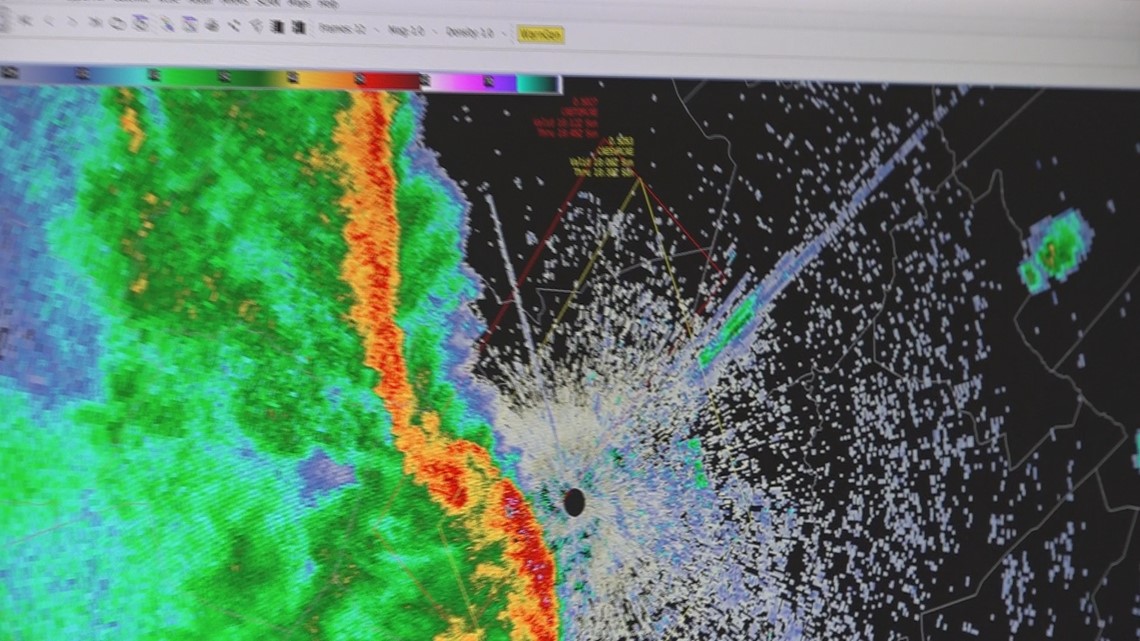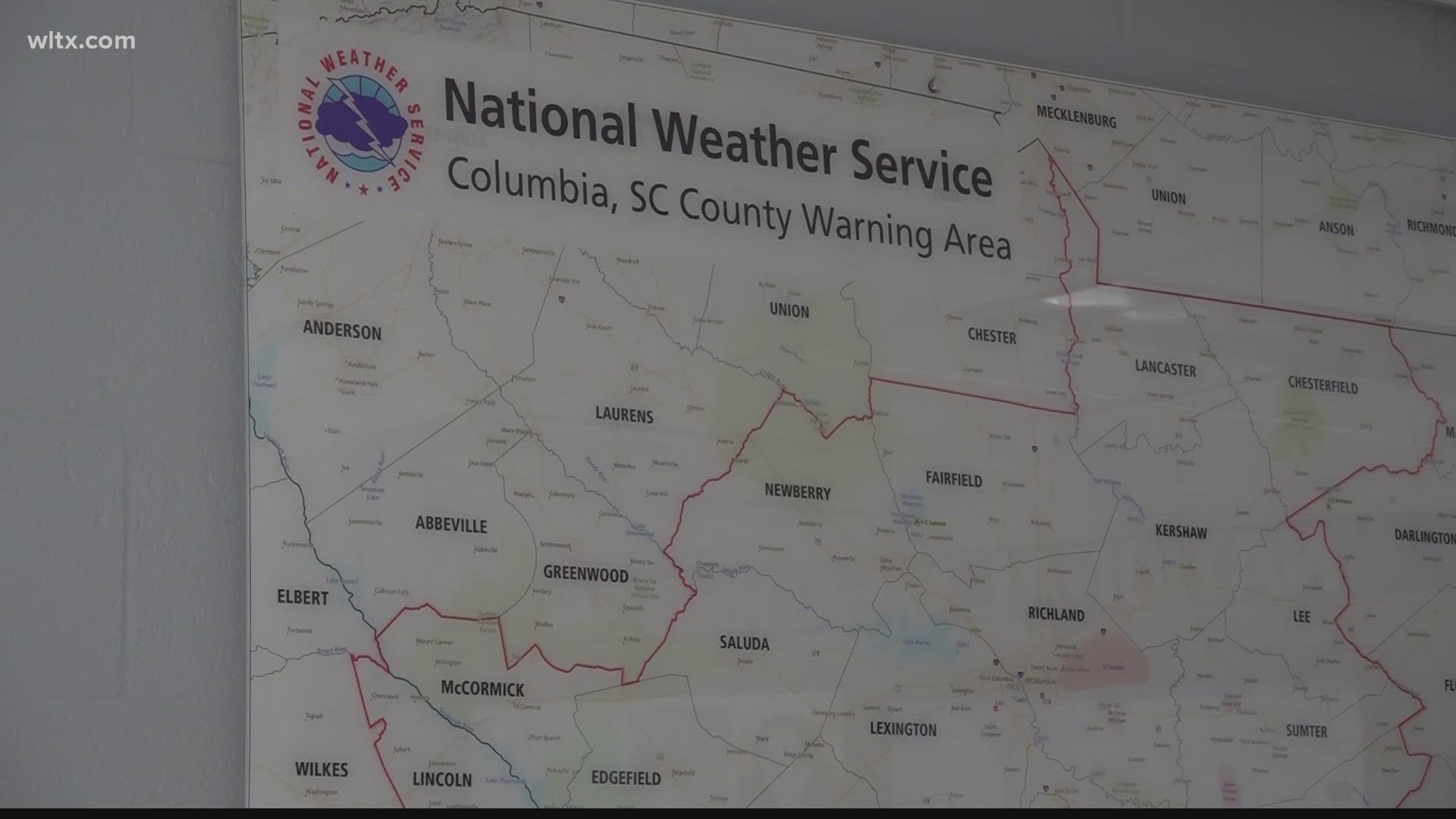COLUMBIA, S.C. — When it comes to keeping the public safe, Warning Coordination Meteorologist John Quagrialiello at the National Weather Service says that is their top priority.
“There are several things we are looking for, One, we are looking for the potential of any damaging winds that could bring down trees, we are looking for large hail, and we are also looking for any rotation in the storms that could produce a tornado.”
“Its significant responsibility you have to weigh the difference between over warning the public and making sure that the public is aware of a significant threat.”
Frank Alsheimer, Science and Operations Officer at the NWS showed us an example from April of 2018 of when severe weather was moving through the Midlands.
The meteorologist looks for radar signatures that would likely lead to severe weather at the surface. This could be strong winds, hail, or rotation that could lead to a tornado.
The software used by the NWS allows them to see the latest radar data and storm reports to issue warnings in real time.


“I'm going to issue a tornado warning, and we are getting this shape of a hook and that is a classic sign of rotation and a potential tornado.”
Frank then creates a path that the tornado is following and the software creates a polygon on the map showing where it is heading. The software then creates text that includes the severity and communities included in the warning.
“We send it out, your phones would be going off, your NOAA weather radio would be going off, and of course, the television stations would be letting you know about the tornado warning.”

